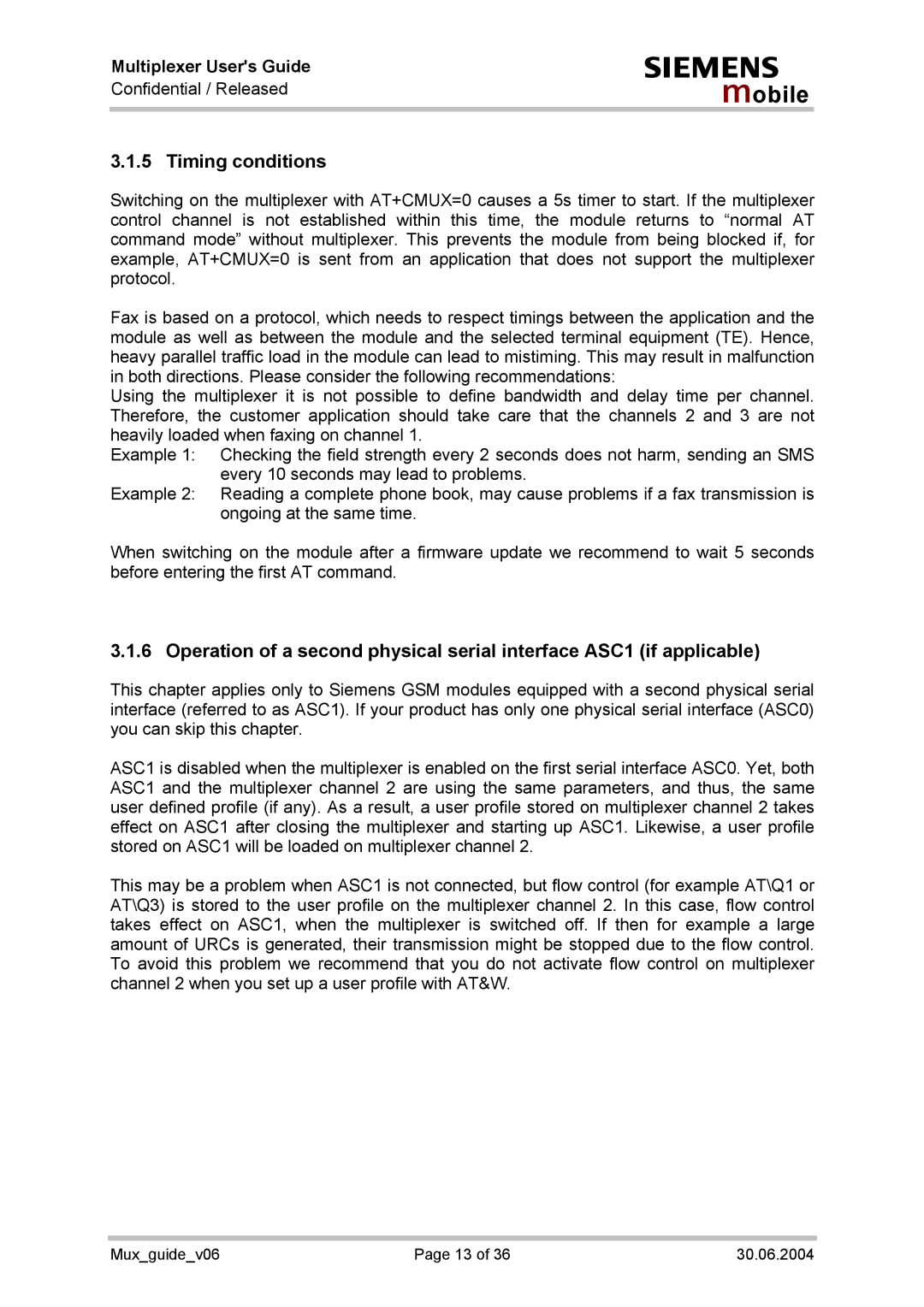
Multiplexer User's Guide
Confidential / Released
s
mobile
3.1.5 Timing conditions
Switching on the multiplexer with AT+CMUX=0 causes a 5s timer to start. If the multiplexer control channel is not established within this time, the module returns to “normal AT command mode” without multiplexer. This prevents the module from being blocked if, for example, AT+CMUX=0 is sent from an application that does not support the multiplexer protocol.
Fax is based on a protocol, which needs to respect timings between the application and the module as well as between the module and the selected terminal equipment (TE). Hence, heavy parallel traffic load in the module can lead to mistiming. This may result in malfunction in both directions. Please consider the following recommendations:
Using the multiplexer it is not possible to define bandwidth and delay time per channel. Therefore, the customer application should take care that the channels 2 and 3 are not heavily loaded when faxing on channel 1.
Example 1: Checking the field strength every 2 seconds does not harm, sending an SMS every 10 seconds may lead to problems.
Example 2: Reading a complete phone book, may cause problems if a fax transmission is ongoing at the same time.
When switching on the module after a firmware update we recommend to wait 5 seconds before entering the first AT command.
3.1.6 Operation of a second physical serial interface ASC1 (if applicable)
This chapter applies only to Siemens GSM modules equipped with a second physical serial interface (referred to as ASC1). If your product has only one physical serial interface (ASC0) you can skip this chapter.
ASC1 is disabled when the multiplexer is enabled on the first serial interface ASC0. Yet, both ASC1 and the multiplexer channel 2 are using the same parameters, and thus, the same user defined profile (if any). As a result, a user profile stored on multiplexer channel 2 takes effect on ASC1 after closing the multiplexer and starting up ASC1. Likewise, a user profile stored on ASC1 will be loaded on multiplexer channel 2.
This may be a problem when ASC1 is not connected, but flow control (for example AT\Q1 or AT\Q3) is stored to the user profile on the multiplexer channel 2. In this case, flow control takes effect on ASC1, when the multiplexer is switched off. If then for example a large amount of URCs is generated, their transmission might be stopped due to the flow control. To avoid this problem we recommend that you do not activate flow control on multiplexer channel 2 when you set up a user profile with AT&W.
Mux_guide_v06 | Page 13 of 36 | 30.06.2004 |
